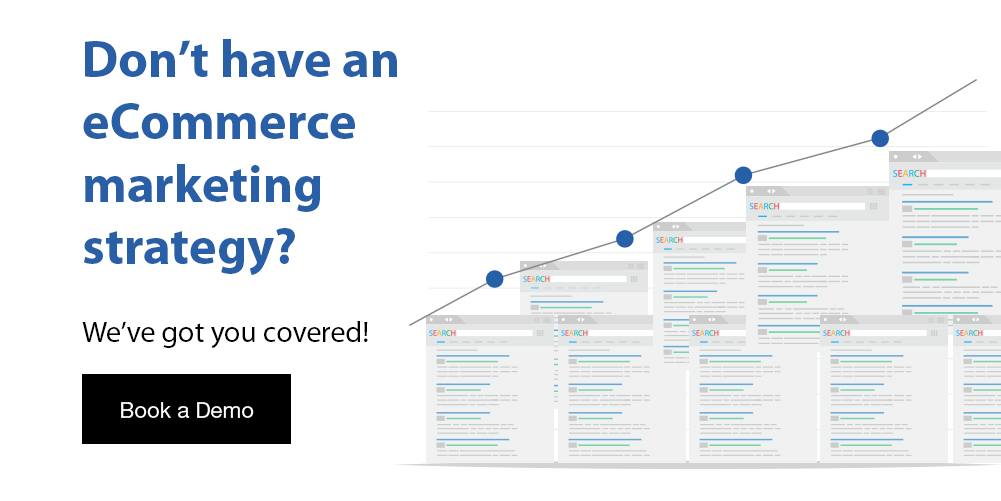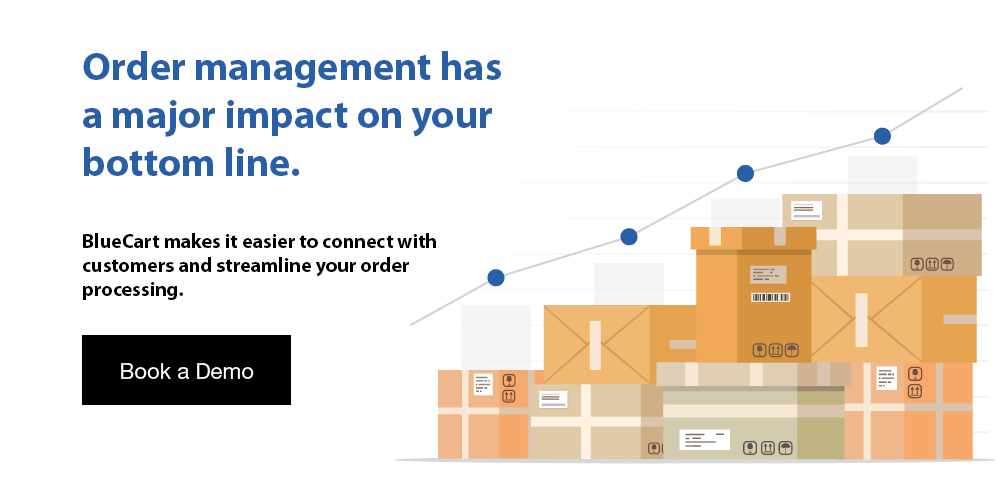When opening a business, you’ll likely have set financial goals such as generating high inventory turnover and more profit. One way to do this is by increasing your average order value and that starts off by using the AOV formula.
A company will often use the AOV formula to gain insight into customer behavior. It’s possible to evaluate this metric every few months; however, it’s best to analyze AOV on a weekly or monthly basis.
Understanding customer behavior will allow you to make strategic marketing and pricing decisions. First, you must understand how to calculate AOV using the average order value formula in order to evaluate this metric.

AOV Formula: What Is It?
The AOV formula is used to calculate a business’s average order value.
The formula is:
Average Order Value (AOV) = Total Revenue ÷ Number of Orders Placed
In many cases, companies will look to increase their AOV and this is possible by identifying and segmenting their top customers. These customers include those that provide a higher percentage of total revenue contribution.
After segmenting top customers, businesses should work towards personalizing sales and eCommerce digital marketing tactics to those customers. This encourages high-value customers to purchase more often and, in turn, increases their AOV. It’s also an important tactic for customer retention.
Evaluating AOV using the average order value formula will allow you to recognize what your top customers have in common. This will help you create the ideal marketing strategy. An example of this is targeting similar customers as you confirm market demand.
With the right AOV formula, you can understand your customers’ needs and introduce new products or services that address those needs. eCommerce businesses can also use AOV to understand if their cross-selling and upselling techniques are effective.
- Upselling: Businesses use this strategy to convince customers to upgrade their products or plans with ones that are higher in price.
- Cross-selling: This is a strategy businesses use to offer additional and oftentimes related products or services to existing customers.
A company’s AOV should reflect a positive trend over time. This is a positive sign that the existing business strategy is working.
Key Takeaway: Many companies use the AOV formula as a tool to help expand their businesses by providing them with insight to improve marketing strategies.
How To Calculate AOV
Average order value is determined using the sales per order instead of the sales per customer. Even though one customer may make multiple different purchases, each order will be factored into the AOV separately.
It’s important to note that the AOV doesn’t describe profit margins or gross profit. Instead, it offers insight into how those metrics originate.
For example: a business is selling three wholesale products priced at $15, $21, and $29 and has an AOV of $19.
This indicates the following two trends regarding customer behavior for this business:
- The lower end of those products represents most of the sales.
- Customers aren’t purchasing multiple items.
In this scenario, you can assume the more expensive items have higher margins. This creates an opportunity to improve marketing and positioning efforts for those products.
Increasing AOV can also increase the business’s return on investment (ROI) and return on assets (ROA) for those marketing efforts. To do this, understand the ROI meaning, how to calculate ROI, and how to do an ROI analysis. Learn more on what is a good ROI.
The higher AOV, the more you get from each one of your customers and every dollar spent on customer acquisition.
It’s important to monitor average order value using the AOV formula on a daily or weekly basis. This will allow you to detect any dips or peaks and look into why they may have occurred. Some possibilities for these AOV fluctuations include buying seasons, new campaigns, and website updates.
Example of Average Order Value
Let’s imagine that you run a wholesale distribution business that sells coffee beans wholesale. If your total sales in a week are $10,000 from 500 orders, your AOV is $20 for that week. This concludes that the average customer spends $20 on each purchase from your wholesale store.
An ideal goal for your coffee distribution business is to increase your average order value from $20 to $25 – which is an increase of 25%. This is a reasonable and achievable goal that may result in a big positive impact on your bottom-line profit and turnover.
If your wholesale business has an AOV of $25, and you maintain 500 orders per week, your total weekly sales will increase to $12,500. That’s an additional $2,500 in sales each week, more than $10,000 per month, and $130,000 per year.
Another example of using the AOV formula to calculate average order value is:
A business earning a total monthly revenue of $2,000 for 100 orders.
Total Revenue ÷ Number of Orders Placed = Average Order Value
$2,000 ÷ 100 = $20
The average order value is $20 for the month.

Increasing Average Order Value
By increasing the average order value of your business, you can determine how much money customers spend on each order.
The following strategies can help your online business increase its AOV:
1. Upselling
The upselling strategy is used when a seller tries to convince a customer to purchase a more expensive item or service. It’s also used when convincing a customer to upgrade or add-on to the products or services they’re purchasing. The goal is to increase the revenue from each order.
2. Cross-Selling
Another commonly used marketing strategy is cross-selling. It’s when a customer is offered complementary or similar products to the one that is being purchased. The goal of this strategy is similar to that of upselling, to increase revenue per order.
3. Increase the Price
An eCommerce business can increase its AOV by raising prices. This will typically lead to higher revenue and AOV. However, higher prices may discourage customers from making purchases which may result in lower revenues.
Due to these risks, it’s best to strategically evaluate the possibilities before implementing these tactics. This can be done with proper risk management.
4. Discounts or Promotions
A proven way to increase AOV is by offering discounts. An example would be offering a discount with a minimum purchase amount. Businesses may do this for orders with a specific value amount, so they can receive a set percentage discount on their order.
5. Offer Free Shipping
As a business, you may consider creating a free shipping threshold. This would be an alternative to your discounts or promotions. For example, offering free shipping to customers that spend over a specific amount on their order.
Keep in mind that shipping and handling costs are expensive, especially when it comes to bulk shipping. It’s best to calculate shipping costs and learn how to print shipping labels on your own. This will allow you to save money and prepare for shipping costs, especially when offering free shipping to your customers.

Frequently Asked Questions About Average Order Value Formula
Tracking the average order value for your eCommerce business using the AOV formula is crucial. It will help you understand and keep track of customer purchasing patterns.
Increasing your business’s AOV is an effective way to increase revenue. To better understand the average order value formula and why you should use it for your business, read the following commonly asked questions.
Is Average Order Value a KPI?
Yes, the average order value is a KPI. As a key performance indicator (KPI), a business’s average order value (AOV) helps measure and understand customer purchasing habits. It’s possible to track AOV over different time periods; however, it’s best to monitor it on a monthly basis.
What Is a Good Average Order Value?
A good average order value will depend on your industry. However, an AOV greater than $274 USD will put your business in the top 20% benchmark. An AOV greater than $534 USD will put you in the top 10%.
How Do You Calculate AOV?
To calculate AOV, you have to track the average dollar amount spent every time a customer completes a transaction on your website. The AOV formula is the total revenue divided by the number of orders.